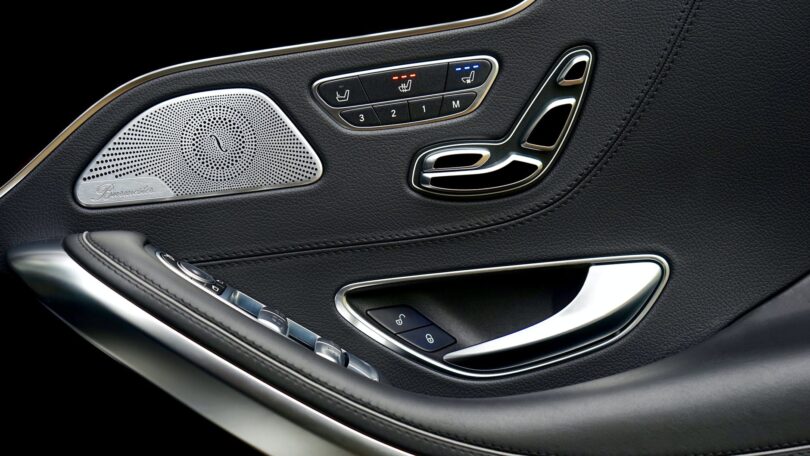Kaixin Auto Holding ($KXIN) is a high-end secondhand car business under Renren ($RENN). In May 2019, Kaixin Auto landed on Nasdaq on SPAC, becoming the second secondhand car company to successfully go public in China. As a leading high-end secondhand car dealer group in China, Kaixin Auto adheres to the vision of “making secondhand cars buyers as assured as if they are buying new cars”.
Based on online to offline stores, its businesses cover used car trading, used car financial services, and post-sales services. Relying on artificial intelligence and big data, Kaixin Auto empowers offline secondhand car dealers, greatly improves the operating efficiency and user experience of offline physical stores, and achieves new breakthroughs in traditional secondhand car retail efficiency. This overall creates a truly reassuring experience for users in this high-end transaction service platform. As of March 31, 2019, Kaixin Auto has 14 dealerships in 14 cities and 12 provinces in China.
As of the press time, KXIN: 2.19 USD, -0.03 (-1.35%); RENN: 11.47 USD, +0.020 (0.17%).
According to the 2020 annual report of Kaixin Auto, its total revenue from 2017 to 2020 was 117 million USD, 431 million USD, 335 million USD, and 33.16 million USD, respectively. In 2018, it achieved a 270% year-on-year growth in revenue, and its growth rate fell to -22.40% in 2019. Correspondingly, the year with the most loss is also 2018. After reaching the loss peak in the year, losses have begun to narrow. The net losses in the four years were 28.695 million USD, 89.332 million USD, 69.68 million USD, and 53.20 million USD, respectively.
The documents submitted by Kaixin Auto to the SEC explain the reasons for the expected significant decline in revenue. “As of December 31, 2019, the company expects inventory and prepayment impairment losses of approximately 38 million USD, and its operating income in the fiscal year 2019 will fall by approximately 20% year-on-year. This is due to the inventory scale and the company’s renewed efforts to dealers in 2019. The deployment results in the impact on business operations.”
It can be seen from the financial report that there have been major changes in the sales expenses and exceptional expenses of Kaixin Auto in 2020. The former reached 50.51 million USD in 2019 and only 9.42 million USD in 2020; the latter changed from 74.09 million USD and dropped to zero.
From the aspect of car sales, we can also see Kaixin Auto is facing a dilemma. According to data released by the China Association of Automobile Manufacturers, the nationwide secondhand car transaction volume in 2019 totaled 14,922,800 units, a cumulative year-on-year increase of 7.96%. Kaixin Auto’s 2019 annual report showed that it sold a total of 6,005 secondhand cars that year, an increase of -19.26% year-on-year, significantly falling behind the overall performance of the domestic secondhand car market.
Comparing with Uxin Limited ($UXIN), another Chinese secondhand car e-commerce platform, its financial report shows that the total revenue for 2019 is 1.588 billion yuan, a year-on-year increase of 140.9%. In 2019, the 2C business achieved revenue of 1.347 billion yuan, a year-on-year increase of 264.5%. Uxin turned to online trading only, operating at asset-light modes, and the sales model reform not only fundamentally optimizes the related cost and expense structure, but also uses key technologies such as big data and AI to further promote cost reduction and efficiency improvement.
From April 1 to June 30, 2020, Uxin’s total revenue was 62.2 million yuan; 2C online transaction volume was 3887; 2C GMV was 426 million yuan; 2C revenue was 51.7 million yuan. During the period, Uxin has comprehensively upgraded its products and services and completed de-financialization, meaning it no longer assumes any financial-related guarantee responsibilities and credit risks. This would further enhance customer experiences and strengthens its competitive advantage.
Kaixin Auto’s performances and operation model are naturally difficult to gain market recognition. Kaixin Auto fell on debut, and its share price has been sluggish since then. Since the beginning of 2020, its stock price has even fallen below 0.5 USD/share many times. On September 8, it hit a new low of 0.41 USD/share, which is 90.24% from the highest point. From mid-August to mid-October, Kaixin Auto’s stock price hovered around 1 USD per share for a long time.
Under this, Kaixin Auto was undoubtedly facing the risk of delisting. What’s surprising is that on October 19, Kaixin Auto’s stock price surged by more than 500% in intraday trading, until the closing price rose by nearly 300% to 8.15 USD per share. After a short-term rapid rise, Kaixin Auto’s stock price fell sharply as well. As of the close of November 9th, 2020, Kaixin Auto’s stock price was at 3.02 USD per share, down 62.94% from the high of 8.15 USD per share 20 days ago.
Regarding the rise in the share price of Kaixin Auto, Pan Helin, the executive dean and professor of the Institute of Digital Economy of Zhongnan University of Economics and Law, suspected that investor’s optimistic expectations or speculations might be behind all the chaos. The capital market is speculated by investors. Therefore, momentary stock price fluctuations may not reflect real prices. In addition, based on Kaixin Auto’s secondhand car distribution business and its small size, it does not overlap with EV businesses a lot. The turnover rate of 397.78% on October 19, 2020, may also reveal capital institutions’ hype intention.
In April this year, Kaixin Auto announced its cooperation agreement with Haitaoche and JD ($JD) and was approved to acquire Haitaoche, the E-commerce platform. The goal of both parties is to achieve a total sales of 2 billion yuan (approximately US$308 million) from Haitaoche on the JD platform and to grow at least 50% annually within three years. The total sales of the cooperation agreement between the two parties are 9.5 billion yuan (approximately 1.4 billion U.S. dollars).
On June 22, Kaixin Automobile announced that it is negotiating with a leading domestic RV retailer. In the future, there will be possibilities for cooperation in RV sales and leasing and the development and production of electric RVs.
On April 15, 2020, data released by Ctrip showed that users searching for “RV Tour” doubled from the same period in March, and scheduled orders were also in a queue after the May 1st holiday. Another set of data shows that SAIC Maxus Music Valley’s caravans were fully booked 10 days in advance, while orders for regular RVs were all sold out before and after May 1st Day. For 2020, the domestic sales of RVs reached an unprecedented 69,000 units. In this year, the RV market seems to have maintained the popular trend of last year.
In any case, Kaixin Auto will continue to invest large sums of money to enter the RV field, and this will undoubtedly further deteriorate its financial situation. Judging from the 2020 financial report, Kaixin Auto’s own cash flow is not optimistic (cash from operating activities continues to flow out, while financing activities are inflows). If their new ideas can impress investors in the secondary market, Kaixin Auto still has room for turnover. Otherwise, everything would mean nothing if there’s no financial support.
This article was written by u/IcedJasmine7





